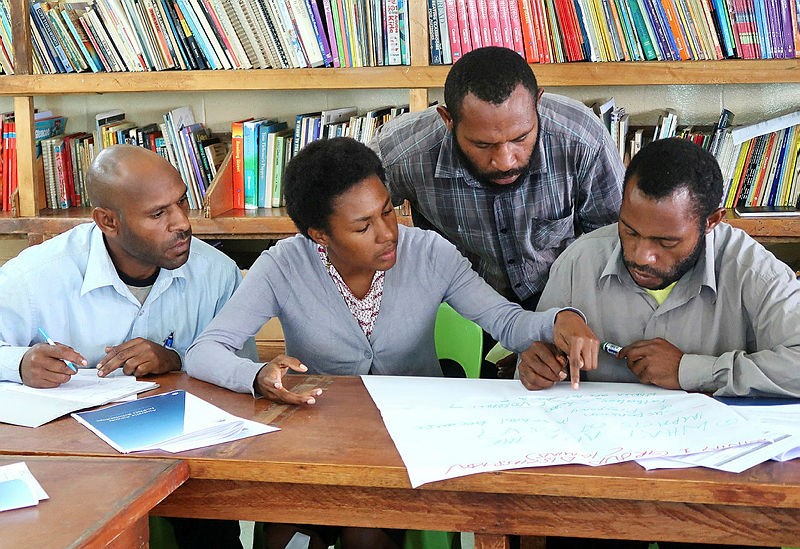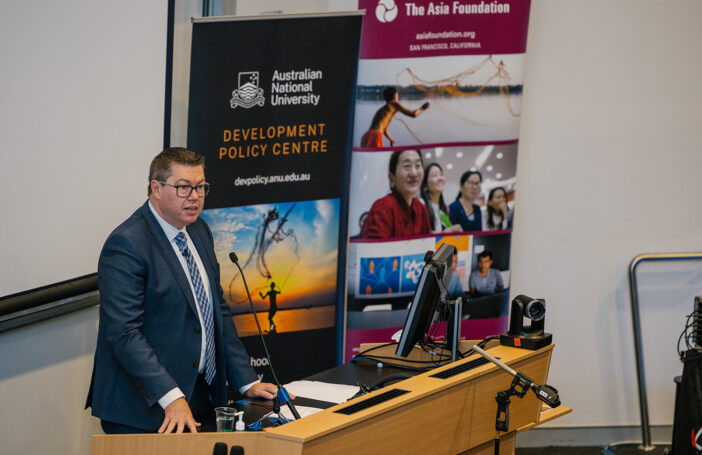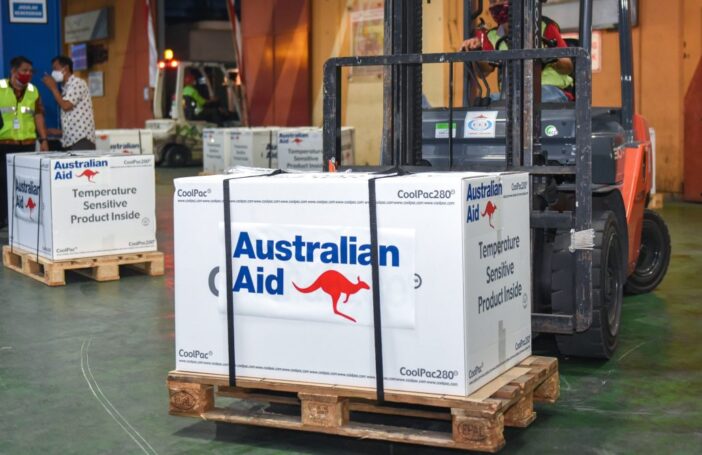Lisa Denney highlights one of the central themes of Australia’s 2023 International Development Policy in a recent and thoughtful contribution to this blog: its seeming ambivalence on the causes and consequences of change. As Denney observes, this is important given that development is all about change, how it happens and, in the case of aid, how outsiders might best support it. Or, at the very least, how they might not make things worse in fragile and aid dependent countries. The large-scale changes associated with long-term improvements in economic growth, state capability and accountability, and in people’s capability to achieve their potential, are usually disruptive and often create new tensions as established interests are challenged. But, it is to be hoped, change occurs peacefully, and well before crises or conflict force painful choices. Perhaps its ambivalence on these questions reflects the inevitable tension between the development policy’s framing around objectives like “stability” and “resilience” and its oft-repeated commitment to “transformation” and “change”.
Picking up on Denney’s theme, I am surprised by the extent to which the new Development Partnership Plans (the contemporary counterparts of what used to be described as country strategies) contain so little reflection on what we know about how change happens, and the barriers to change, in two of Australia’s most enduring and largest development partners, Papua New Guinea and Indonesia. This is particularly surprising given the reams of reports, reviews, research, data and evaluations the aid program has commissioned on both countries over the decades.
In the last financial year (2023-24) alone, the PNG program published evaluations of multi-year, multi-million dollar programs in areas such as immunisation and health systems strengthening, sexual and reproductive health, electoral assistance, and economic and social infrastructure. In the case of Indonesia, rural water supply and sanitation, disaster risk reduction, infrastructure finance, health security, and sub-national road improvement programs have all been the subject of detailed assessments. All these exercises likely involved a lot of thought, time and resources on the part of hardworking Department of Foreign Affairs and Trade (DFAT) officers, commissioned experts, and implementing and local partners. The increased accessibility and timeliness of these evaluations and the accompanying management responses represents a tangible improvement in Australian aid transparency. The government has said that it will “use DFAT’s Development Program Committee, which has oversight of all aspects of Australia’s development assistance, to drive evaluation quality and to ensure that evaluation findings inform policy and program decision making.” (emphasis added).
But you wouldn’t know this from reading the plans. Apart from some very broad statements and a (helpful) schedule of future evaluations, there is no reflection in either document on what DFAT’s previous work on aid performance and effectiveness in these two countries — at the program, sectoral, or country level — says about systemic barriers to change, what works, what doesn’t, and how Australia’s aid will adapt as a result. This is despite International Development Minister Pat Conroy’s declaration in launching the policy last year that Australia is “changing the way it delivers its development assistance” (presumably meaning based on evidence) and explicitly identifying learning and the sharing of lessons as one of the three key tests against which implementation should be judged. Nor do the plans cite any of the “real time” evaluations that Conroy has highlighted as part of the government’s justification for not reinstating the former Office of Development Effectiveness and the Independent Evaluation Committee.
What might explain this gap between evidence, learning and strategy? According to one of the world’s sharpest aid critics, former World Bank economist William Easterly, aid agencies are incentivised to be future-biased and therefore struggle with learning: “The record of the aid agencies over time seems to indicate weak evidence of progress over time in response to learning from experience, new knowledge, or changes in political climate”. Writing in 2007, Easterly cites the depressing similarities between the findings of the 1969 Pearson Commission on International Development — instigated by then World Bank President Robert McNamara — and the findings of contemporaneous reviews by agencies like the United Nations Development Programme, the International Monetary Fund, the World Bank and the Commission for Africa. Almost forty years on, the latter, 2007-era studies highlighted the continued lack of progress in key areas like donor coordination, poverty targeting, the limitations of technical assistance, and the lack of attention to debt sustainability.
Many of these problems endure in 2024, including in the Pacific where Australia is the largest donor. For Easterly, the fundamental problem is the “broken feedback loop”: the fact that, unlike the situation that obtains with domestic spending programs, those that make decisions about aid (donor politicians and bureaucrats) are not directly accountable to those that are supposed to benefit from it (citizens in developing countries). They lack, therefore, a basic incentive to learn.
I’m less pessimistic than Easterly. As Stefan Dercon, Dan Honig and others have shown, aid agencies are capable of learning and adapting if they invest in the systems and deep local partnerships that enable them to understand the sources of change, have the expertise and authority to use this knowledge to shape and adapt their programs, and are humble enough to acknowledge failure and make corresponding changes. Whatever one might think of the US as a donor, its current fragility and development strategy for PNG presents a much more frank assessment of the barriers to and drivers of change in that very complex environment. And Australia has previously been a world-leading exponent of incorporating tools like fragility analysis and “drivers of change” studies into its own development strategies. As others have observed, this can be done in a way that doesn’t offend or alienate our partners; indeed, mutual learning should be a key feature of these partnerships. And the pivot to “statecraft” should not mean lapsing into a self-induced aid amnesia.
I’m not sure what happened between the Conroy speech extolling the virtues of learning in search of better impact and the publication of the first two development partnership plans. But if aid is about putting public money behind “bets for change”, I’d recommend that we pay closer attention to the form guide.






Your comment that “aid agencies are capable of learning and adapting” says it all, really. DFAT is not, and does not see itself as, an aid or development agency. Your comparator, the USA, still has a standalone agency and perhaps that is the key differentiating factor. To my mind, the real opportunity or enabler to build a stronger culture of learning and reflection within DFAT may come from the wider evaluation agenda in the Australian public sector and the signals coming from central agencies rather than the Ministers who oversee the development program.
Thanks, Sara: DFAT may well not see itself as an aid or development agency but, at same time, the government does. The Minister has publicly and repeatedly said he wants DFAT to be a “world-class development agency”, the govt. is rebuilding DFAT’s “development capability”, and that “development is at the heart of our statecraft” etc., etc. I’m not sure how to square the picture above with these statements (or whether to even try!). To your point, it was telling that the government chose not to add “development” to DFAT’s title when releasing the policy last year; this would have been a small & simple, but symbolically important, change.
I agree that the reforms being pursued through the Australian Centre for Evaluation and the wider APS are positive and hopefully they find some meaningful institutional expression within the aid program.
Hi Cam and Lisa
As a former member of the APS for over 4 decades, can I suggest that this lack of reflection may well be due to staff turnover? Short-term occupancy of positions (e.g. less than 2 years) leads to inability and disinterest to focus on the long-term – not just in Foreign Affairs.
In the various Departments where I worked, staff were more concerned at satisfying the Minister and Secretary (in that order). Robodebt lessons, anyone? And as the Minister moved on and the new one had different priorities, so did the varying priorities of staff (at all descending levels).
I note that the last Aid Program Performance Reports were in 2018-19:
https://www.dfat.gov.au/publications/development/aid-program-performance-reports
Thanks, Peter: I think turn-over is one factor which is why you need this role to have a much firmer institutional expression (which it did with ODE/IEC until 2020, even if it was weakened toward the end).
On the positive side, DFAT has resumed annual whole-of-aid program performance reporting: https://www.dfat.gov.au/sites/default/files/performance-of-australian-development-cooperation-report-2022-2023.pdf
It would be good to see more of this kind of work reflected in the DPPs.
Could not agree more Cam – and yes, very much the questions I was driving at in my earlier blog. I have just been reading the DPPs and you are right about the lack of reflection on what has been learnt from significant past investments. Given that they are political documents, perhaps we should not be altogether surprised. What seems more shocking is the absence of analysis of change dynamics that lies BEHIND those DPPs, or anywhere else in the aid program. Why is there not regular reflection of these questions built into routine operations? Where is the bringing together of Team Leaders, local partners and Managing Contractor Reps at Post to share analysis and generate collective understanding of how change happens in a given time and place? I suspect the ‘all the tools of statecraft’ mantra that you flag may be crowding out space for this bigger picture thinking. It strikes me that there are actually endless ways in which one could build a culture of reflection on how change happens and yet none of them happen… which suggests this is lower down the priority list than I’d like to believe.
Thanks, Lisa. And thanks for writing such a great blog! One model would be to do this through regional “hubs”(e.g. Mekong, Pacific etc.) which could have a pool of expertise across evaluation, working-in-partner systems, design etc. But, as you say, I do think ultimately this “learning” work needs to have some firm institutional expression that is headed by someone senior with the authority/autonomy to ensure that it is happening and is actually being translated into programs and policy.
I think ill-defined concepts such as “statecraft” and “influence” are too nebulous and ephemeral to hang a $5 billion aid budget upon. It is much clearer to say that an effective aid program that delivers development impact is in Australia’s national interest.